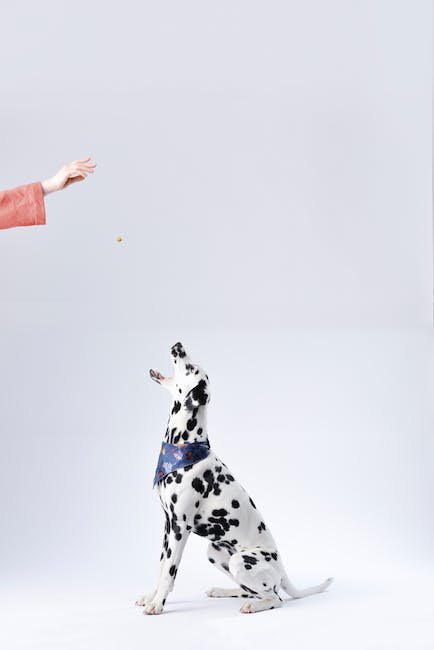Dogs, our loyal companions, fill our lives with joy, laughter, and countless unforgettable moments. They wiggle their tails when we walk through the door, their paws dance with excitement during playtime, and their eyes express unconditional love in every glance. As dog owners, it is our utmost responsibility to provide them with the guidance and training they need to thrive in our human-centric world. But which are the best dog training techniques? In this article, we delve into the fascinating realm of canine education, exploring the various methods, ideologies, and philosophies behind effective dog training. Join us, as we embark on a journey to unravel the secrets that enable us to shape our furry friends into well-behaved, happy, and harmonious members of society.
Table of Contents
- Understanding the Basics: Different Approaches to Dog Training
- Exploring Positive Reinforcement: The Key to Effective Training
- The Importance of Consistency: Establishing Rules and Boundaries
- Addressing Specific Challenges: Techniques for Correcting Unwanted Behavior
- Tailoring Training Methods: Considering Your Dog’s Personality and Breed
- Q&A
- In Summary

Understanding the Basics: Different Approaches to Dog Training
Different Approaches to Dog Training
When it comes to training our furry companions, there are various approaches that dog owners can take. Each approach has its own unique techniques and philosophies, and it’s important to understand the basics of these different methods.
1. Positive Reinforcement: This approach focuses on rewarding desired behaviors rather than punishing unwanted ones. By using treats, praise, and toys as rewards, dogs are encouraged to repeat behaviors that result in positive outcomes. This method promotes a trusting and positive relationship between the owner and the dog.
2. Clicker Training: Clicker training is a precise and effective method that uses a small handheld device called a clicker to signal to the dog when they have performed a desired behavior. The click is immediately followed by a reward, creating a clear association between the click and the reward. This approach relies on consistency and clear communication.
3. Alpha Dog Training: This approach is based on the idea of establishing dominance and leadership over the dog. It emphasizes the dog’s instinctual pack mentality and incorporates techniques such as physical corrections and assertive body language. It’s important to note that this approach requires a knowledgeable owner who can distinguish between discipline and aggression.
Remember, each dog is unique, and what works for one may not work for another. It’s essential to consider your dog’s personality, breed, and individual needs when selecting a training approach. The key is to choose a method that aligns with your values and goals, and always ensure the well-being and happiness of your furry friend throughout the training journey.

Exploring Positive Reinforcement: The Key to Effective Training
When it comes to effective training, positive reinforcement has proven to be a powerful tool. Unlike traditional methods that rely on punishment and negative consequences, positive reinforcement emphasizes rewards and encouragement to shape desired behaviors. By focusing on the positive aspects of training, this approach creates a nurturing and enjoyable learning environment.
One of the main advantages of positive reinforcement is its ability to enhance motivation and engagement. By rewarding desired behaviors with praise, treats, or other incentives, trainers can reinforce the link between the action and its positive outcome. This not only increases the likelihood of the behavior being repeated but also encourages the trainee to actively participate and strive for success.
Furthermore, positive reinforcement helps build trust and strengthens the bond between the trainer and the trainee. Through consistent rewards, the trainee learns to associate the trainer with positive experiences, creating a sense of security and fostering a cooperative attitude. This positive relationship dynamic between the trainer and trainee sets the stage for more effective communication and faster skill acquisition.
Benefits of Positive Reinforcement in Training:
- Increases motivation and engagement
- Enhances trust and strengthens the trainer-trainee bond
- Creates a positive and enjoyable learning environment
- Encourages active participation and cooperation
- Facilitates effective communication and faster skill acquisition

The Importance of Consistency: Establishing Rules and Boundaries
In every aspect of our lives, consistency plays an integral role in shaping our behavior and creating a sense of structure. Whether it’s in our personal relationships, professional endeavors, or even our daily routines, consistency provides a solid foundation upon which we can build trust, discipline, and success. It is especially crucial when it comes to establishing rules and boundaries.
Clear Rules:
- Rules act as guiding principles that help maintain order and predictability.
- They provide a framework for expectations and define what is acceptable and what is not.
- Consistent enforcement of rules fosters a sense of fairness and equality among individuals.
Boundaries:
- Boundaries create a safe space and protect both individuals and relationships.
- They help define personal limits and establish respect for oneself and others.
- Consistent reinforcement of boundaries leads to healthier communication and mutual understanding.
By maintaining consistency in establishing rules and boundaries, we cultivate an environment that promotes growth, accountability, and harmonious interactions. When expectations are clear and boundaries are respected, we pave the way for balanced relationships and a more fulfilling life.

Addressing Specific Challenges: Techniques for Correcting Unwanted Behavior
Unwanted behavior can pose significant challenges for individuals seeking personal growth and development. Fortunately, there are various techniques available to address and correct these behaviors effectively. Here are some strategies worth considering:
- Communication and Active Listening: A crucial first step in correcting unwanted behavior is effective communication. Engage in open and honest conversations to understand the underlying reasons behind the behavior. Practice active listening by paying attention, empathizing, and asking clarifying questions. This approach helps create a safe space for dialogue and encourages the individual to reflect on their actions.
- Positive Reinforcement: Encouragement and positive reinforcement can be powerful tools for behavior correction. When individuals display desired behaviors or show signs of improvement, acknowledge and reward their efforts. This fosters motivation, self-confidence, and a sense of accomplishment, reinforcing the transition towards more desirable habits.
- Establishing Clear Boundaries: Setting clear boundaries is essential in correcting unwanted behavior. Define expectations, limits, and consequences in a respectful and firm manner. By providing a framework and consistency, individuals gain a better understanding of what is acceptable and what is not, facilitating behavior adjustment.
Remember, correcting unwanted behavior takes time, patience, and understanding. By implementing these techniques, you can help individuals navigate through their challenges and empower them to make positive changes in their lives.
Tailoring Training Methods: Considering Your Dog’s Personality and Breed
When it comes to training your furry friend, one size does not fit all. Each dog has a unique personality and breed that should be taken into account for effective training methods. By understanding and adapting to these individual characteristics, you can create a tailored approach that suits your dog’s specific needs.
Personality:
- Active and Energetic: If your dog is lively and full of energy, incorporating active training exercises and games can help engage their enthusiastic nature. Consider activities such as agility courses, fetching, or flyball to keep them mentally and physically stimulated.
- Cautious and Shy: For dogs that are more reserved or timid, take a gentle approach to training. Providing a safe and quiet environment can help them build trust and confidence. Begin with basic obedience exercises and gradually introduce new experiences, rewarding them for small achievements.
- Curious and Independent: Dogs with an adventurous spirit may benefit from training methods that challenge their intelligence and independence. Activities like puzzle toys, nose work, or even advanced tricks can keep their minds engaged while allowing them to work at their own pace.
Breed:
- Herding Breeds: Dogs bred to control livestock often possess a strong instinct for herding. Utilize their natural abilities by incorporating training methods that involve mental stimulation, obedience, and tasks that mimic herding behavior.
- Hunting Breeds: Breeds specifically developed for hunting excel in tracking and scent work. Incorporate activities such as scent training, tracking exercises, or retrieving games to keep them engaged and satisfied.
- Toy Breeds: Smaller breeds may have different physical capabilities and attention spans. Opt for short, frequent training sessions that emphasize positive reinforcement and focus on commands that are appropriate for their size and energy levels.
Remember, building a strong bond and trust with your dog is crucial for effective training. Pay attention to their individual needs and always adjust your training methods accordingly. With patience, consistency, and a personalized approach, you will be well on your way to training success!
Q&A
What are the best dog training techniques?
The best dog training techniques vary depending on the dog and the desired outcome. However, positive reinforcement, clicker training, and reward-based methods are generally effective and promote a healthy bond between the dog and their owner.
Are aversive methods like shock collars recommended for dog training?
Aversive methods, such as shock collars, are generally not recommended for dog training as they can cause physical and psychological harm to the dog. Positive reinforcement techniques are often more effective and compassionate alternatives.
How long does it take to train a dog using positive reinforcement?
The timeline for training a dog using positive reinforcement techniques can vary depending on factors such as the dog’s age, breed, and their individual temperament. Consistency, patience, and regular training sessions are key to achieving desired results.
Do certain dog breeds require different training techniques?
While different dog breeds may have varying temperaments and learning styles, the fundamental principles of positive reinforcement and reward-based training techniques can be applied to all breeds. Tailoring training methods to suit a specific breed’s characteristics can enhance the training experience.
What role does consistency play in dog training?
Consistency is crucial in dog training. Dogs thrive on routine and structure, so consistently reinforcing desired behaviors and using consistent cues and commands helps them understand what is expected of them, making the training process smoother and more effective.
Can I train my dog without professional help?
Yes, it is possible to train your dog without professional help using resources such as books, online tutorials, and group training classes. However, consulting a professional trainer can provide valuable guidance and support for more complex or specific training needs.
How do I prevent my dog from exhibiting undesirable behaviors?
Preventing undesirable behaviors in dogs involves a combination of proper socialization, consistent training, and understanding the underlying causes of the behavior. Identifying triggers and redirecting your dog’s attention towards positive alternatives can help prevent and modify undesirable behaviors.
Is punishment an effective training method?
Punishment is generally not an effective training method for dogs as it can create fear, anxiety, and aggression. Positive reinforcement techniques that reward desired behaviors tend to yield better long-term results, strengthening the bond between the dog and their owner.
At what age should I start training my dog?
Ideally, training should start as early as possible. Puppies can begin learning basic commands and socialization skills from as early as eight weeks old. However, dogs of any age can be trained with patience and consistency.
What should I do if my dog is not responding to training?
If your dog is not responding to training, it is important to assess the training techniques being used. It may be beneficial to consult a professional trainer to address any potential issues and provide guidance on effective training methods for your specific dog.
In Summary
In the vast world of dog training, finding the techniques that work best for your furry companion can sometimes feel like navigating through a maze of conflicting information. But fear not, dear reader, as we have come to the end of this enlightening journey to provide you with the answers you were seeking.
Throughout this article, we delved into the myriad of dog training techniques, exploring their strengths, weaknesses, and everything in between. We embarked on a quest to unravel the secrets behind effective dog training, helping you separate fact from fiction.
From the classical approach of positive reinforcement to the intricate world of clicker training, we discovered that there is no one-size-fits-all when it comes to teaching our canines. Every dog has its unique personality, quirks, and needs, and understanding these nuances is key to their success in learning.
We explored the power of consistency, patience, and empathy, emphasizing the importance of building a strong bond with our four-legged friends. By practicing effective communication and setting clear boundaries, we establish a foundation that fosters trust and respect within our dynamic.
Remember, dear reader, that dog training is not a destination, but a lifelong journey. It requires dedication, time, and a willingness to adapt our techniques as we grow alongside our beloved companions. As we’ve discovered, the best training techniques are those that respect the individuality of each dog, emphasizing positive reinforcement, and fostering a sense of collaboration between human and canine.
So, as we conclude this illuminating exploration, armed with a wealth of knowledge, it is now your turn to embark on your own dog training adventure. May you find joy in every wag of the tail, triumph in every milestone achieved, and companionship that transcends words.
Remember, when it comes to dog training, the possibilities are as boundless as the love and loyalty of our furry friends.
As an affiliate, my content may feature links to products I personally use and recommend. By taking action, like subscribing or making a purchase, you’ll be supporting my work and fueling my taco cravings at the same time. Win-win, right?
Want to read more? Check out our Affiliate Disclosure page.